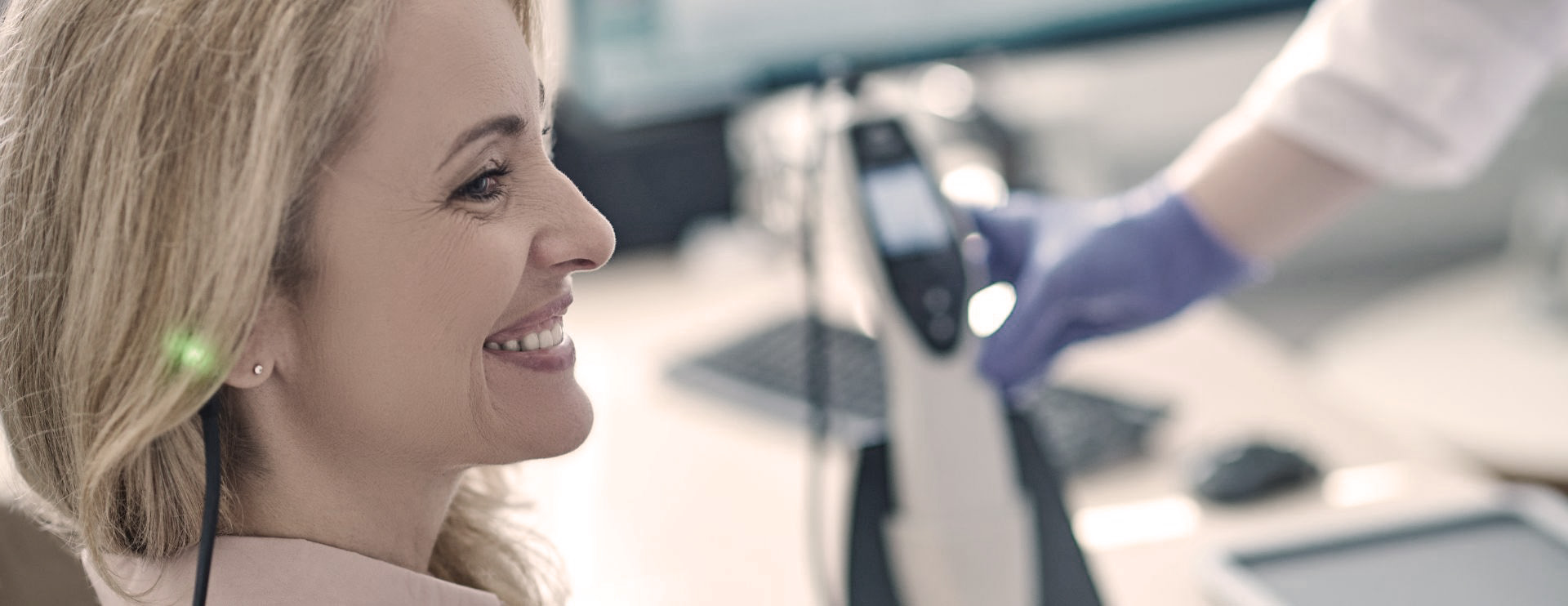

Otoacustic Emissions
Otoacoustic Emissions (OAE) is one of the objective hearing tests in which responses to sound stimuli are collected by a measuring device. This test shows the functioning of the outer hair cells of the cochlea (OHCs), which amplify sound waves reaching the inner ear. The signals are collected with a microphone placed in the patient’s ear canal.
Otoacoustic emissions are present from birth. They decrease with age and can be altered by various types of damage to the inner ear, in particular by intense or prolonged exposure to noise, but also by various ototoxic drugs, in particular some chemotherapeutic drugs and antibiotics.


When is an otoacoustic emission test performed ?
For neonatal screening of hearing problems
During an evaluation of hearing in a person exposed to noise or subjected to toxic treatments for the inner ear, particularly certain antibiotics (aminoglycosides) and various chemotherapies (particularly cisplatin). In these patients, changes in otoacoustic emissions precede hearing decline in subjective hearing tests (tonal and vocal audiometry), allowing early detection of deafness and preventing its worsening. This is of vital importance in occupational medicine (monitoring of workers in noisy environments) and oncology.
When assessing a patient with a discrepancy between normal or slightly impaired pure tone audiometry and a significant deterioration of speech understanding (intelligibility) on speech audiometry. The collection of normal OAEs (cochlea ECAs are not impaired) in combination with impaired Auditory Evoked Potentials will evoke Auditory Neuropathy Spectrum Disorders, a long-standing and still often misunderstood entity that requires appropriate management.
When hearing aids fail, an evaluation combining OAE and ABR will help identify the reasons for the failure and suggest an appropriate treatment (speech therapy, neuromodulation, etc.).
In patients where subjective tests do not seem reliable for various reasons.
The different types of otoacoustic emission tests
When necessary, we use different techniques to collect OAE :
- Transient evoked otoacoustic emissions (TEOAE), which are useful for screening purposes, especially in young children.
- Distortion products of otoacoustic emissions (DPOAE), which can be used to test a wide range of inner ear frequencies, both for screening purposes and to objectively measure hearing thresholds.
Like all investigations aimed at assessing a patient’s hearing, this test is only of value if it is part of a complete assessment of the auditory system, which includes a thorough history, a microscopic otoscopy, and subjective hearing tests (tonal and vocal audiometry).
